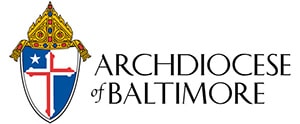Even though Bob Reier is a parishioner of St. Louis, Clarksville, he eagerly chips in as an altar server at 9 a.m. each Sunday for the Baltimore basilica’s weekly Latin Mass.
What the 58-year-old Ellicott City resident likes most about this particular service is it blends the beauty of the Catholic Church’s official language with the traditions of the post-Vatican II Mass.
If more Catholics knew this particular service was not the old style of the Tridentine Mass but a new-style Mass said in both Latin and English, they might be more willing to give it a chance, said Father Jeffrey S. Dauses, the new rector of the Basilica of the National Shrine of the Assumption of the Blessed Virgin Mary.
As it stands now, fewer than 100 worshipers sit in the pews of the nation’s first Catholic Cathedral during the Latin Mass, and Father Dauses believes the congregation will grow if the faithful understand more about the service.
“We have a participation booklet that outlines the service in both English and Latin so you can follow the liturgy,” he said. “The readings and homily are all in English, so the word of God is accessible.”
The Latin Mass has been offered at the basilica since the late 1960s, shortly after the conclusion of the Second Vatican Council.
The loyal congregation has slowly diminished to less than 100 worshipers and Father Dauses believes those numbers will grow if he can convince more Catholics to give the Mass a chance.
“There are a lot of younger Catholics who have studied Latin and it’s easy to follow along even if they don’t speak the language,” he said. “It’s mysteriously beautiful to hear the liturgy in Latin, and it’s spiritually engaging.”
Mr. Reier believes the Latin Mass is one of the hidden treasures in the Archdiocese of Baltimore and says his Catholic faith has been enriched in the 18 months he has participated in the service.
“It’s a nice combination of what I like about the Latin language of the old Mass of my youth and the more modern aspects of the new-style of Mass,” he said. “It makes Mass that much more enjoyable.”

